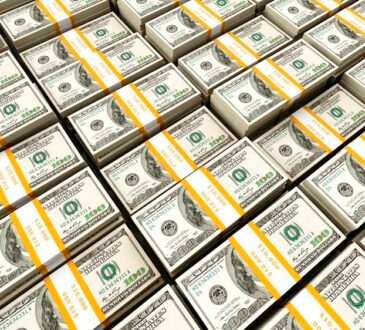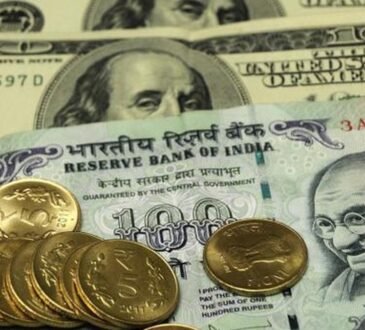- Gold slips as China’s stimulus efforts fail to ease deflationary pressures.
- Minneapolis Fed President Kashkari’s comments on modest rate cuts and a strong labor market further support the Greenback.
- Geopolitical tensions, including Israel’s response to Hezbollah and Iran, continue to influence Bullion prices, with traders eyeing US economic data later this week.
Gold price retraces after hitting a daily high of $2,666 on Monday as China’s stimulus failed to provide relief to the financial markets and the Greenback extended its advance. The XAU/USD trades at $2,650, down some 0.26% at the time of writing.
Over the weekend, data revealed that China’s economy faces deflationary pressure that threatens to derail it from achieving the 5% Gross Domestic Product (GDP) goal. Regarding this, China’s Finance Minister Lan Foan announced that the government will continue providing stimulus, supporting the property market and replenishing state bank capital to boost the economy.
In the meantime, the US bond market remains closed in observance of Columbus Day, yet Bullion prices slipped amid a strong buck.
The US Dollar Index (DXY), which tracks the Greenback’s value against a basket of six currencies, edged up 0.38% to 103.30, its highest level since early August 2024.
Earlier, Minneapolis Fed President Neel Kashkari revealed that he expected “further modest reductions in our policy rate.” He added that recent jobs data shows a strong labor market and that the economy is finally bringing inflation back to 2%.
Meanwhile, geopolitics will continue to play a role when quoting the yellow metal.Newswires reveal that Israel began a security meeting to decide its response to Iran and Hezbollah attacks in Tel Aviv.
This week the US economic schedule will feature the New York Empire State Manufacturing Index on Tuesday, followed by the Balance of Trade on Wednesday. Federal Reserve (Fed) members will also be speaking throughout the week.
Daily digest market movers: Gold price traders eye key US economic data
- On Tuesday, according to estimates, the New York Empire State Manufacturing Index for October is expected to fall from 11.3 to 2.3.
- Fed officials, including San Francisco Fed President Mary Daly, Board Governor Adriana Kugler, and Atlanta Fed President Raphael Bostic, are scheduled to make public remarks.
- The combination of a slightly higher Consumer Price Index (CPI) and a weak US employment report on Friday could lead to additional rate cuts by the Fed.
- The yield on the benchmark US 10-year T-note remains above the 4% threshold amid diminishing odds of the Fed’s more aggressive policy easing.
- Data from the Chicago Board of Trade, based on the December fed funds rate futures contract, indicates that investors are pricing in 46 basis points (bps) of easing by the Fed toward the end of 2024.
XAU/USD technical outlook: Gold price slumps toward $2,650
Gold price uptrend remains intact despite retreating from around $2,660 toward the $2,650 area. Momentum is bullish, as shown by the Relative Strength Index (RSI), though the RSI edges slightly lower, an indication that some selling pressure remains.
If XAU/USD drops below $2,650, it could pave the way for further downside. The next key support level would be $2,600. A breach of the latter will expose the 50-day Simple Moving Average (SMA) at $2,5550.
Conversely, if XAU/USD clears the October 4 high at $2,670, this could pave the way to challenge the YTD high of $2,685, which is ahead of the $2,700 mark.
Fed FAQs
Monetary policy in the US is shaped by the Federal Reserve (Fed). The Fed has two mandates: to achieve price stability and foster full employment. Its primary tool to achieve these goals is by adjusting interest rates. When prices are rising too quickly and inflation is above the Fed’s 2% target, it raises interest rates, increasing borrowing costs throughout the economy. This results in a stronger US Dollar (USD) as it makes the US a more attractive place for international investors to park their money. When inflation falls below 2% or the Unemployment Rate is too high, the Fed may lower interest rates to encourage borrowing, which weighs on the Greenback.
The Federal Reserve (Fed) holds eight policy meetings a year, where the Federal Open Market Committee (FOMC) assesses economic conditions and makes monetary policy decisions. The FOMC is attended by twelve Fed officials – the seven members of the Board of Governors, the president of the Federal Reserve Bank of New York, and four of the remaining eleven regional Reserve Bank presidents, who serve one-year terms on a rotating basis.
In extreme situations, the Federal Reserve may resort to a policy named Quantitative Easing (QE). QE is the process by which the Fed substantially increases the flow of credit in a stuck financial system. It is a non-standard policy measure used during crises or when inflation is extremely low. It was the Fed’s weapon of choice during the Great Financial Crisis in 2008. It involves the Fed printing more Dollars and using them to buy high grade bonds from financial institutions. QE usually weakens the US Dollar.
Quantitative tightening (QT) is the reverse process of QE, whereby the Federal Reserve stops buying bonds from financial institutions and does not reinvest the principal from the bonds it holds maturing, to purchase new bonds. It is usually positive for the value of the US Dollar.






